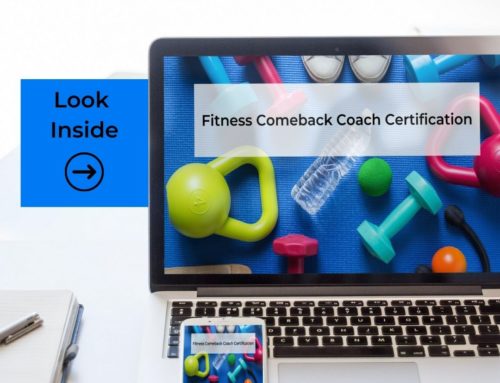Giving advice instead of asking thoughtful questions
Problem: Clients ask me for health and fitness advice daily. While well intentioned advice, like “add 2000 steps per week,” often follows, it seldom leads to action or results. Either the advice didn’t fit the person’s lifestyle and current time priorities, or the advice was only one small part of all the actions that the client would need to take to achieve the goal they envision.
Try instead: Instead of automatically sharing an answer that works for some people some of the time, try asking questions about the client’s vision, outcome, and current habits. Use an inquiry-based series of questions to move from the vision, to outlining action steps, to selecting ONE small change to begin with consistently.
Talking at someone instead of having a mutual conversation
Problem: Fitness professionals that have had many coaches, mentors, and wonderful educators often love to share and help. This leads to too much information flow for the receiver to take in. Smiling and nodding follows, but the recipient doesn’t act on all of the great pearls of health and wellness wisdom.
Try instead: Focus on listening first. Ask a question to understand the other person’s starting point. Then ask strategic questions to see what the client thinks the next action step would be. Finally, ask the client to pick one action step they can take today. Then, set an accountability plan to that step.
Trying to accomplish too many things in too short of time
Problem: The Internet-focused era is here, and this has made people think they can have instant results, or results by taking an action only once, or not at all. For example, a client asked me why his flexibility wasn’t improving. I asked him how many days he practiced stretching. He responded “do you mean this year?” “Sure,” I responded. “Maybe once,” was his response. I could see the perplexity melt from his expression as he realized “maybe once,” and the result he was asking about were inconsistent.
Try instead: Only allow your client to pick ONE change. Once your client has been at least 80% consistent with that one change in the past month, then allow your client permission for additional changes.
Telling instead of coaching
Problem: Have clients ever asked you how to do something? You tell them how to do it, but find yourself met with only resistance, excuses, and lack of action? The challenge lies in that you provided the “how.” We all have our own unique ways of accomplishing tasks and goals. Clients are not completely identical to you, and they will have their own ways that work with their lifestyles too.
Try instead: Help your client understand the “what,” and ask them for their ideas on the “how.” If their “how,” is inconstant with what they are trying to accomplish, bring the discrepancy to light and see if they can come up with alternative steps and processes. If the client generates the “how,” success is more likely.
Being a cheerleader instead of a coach
The problem: We want our clients to succeed. As very caring professionals, we often want our client to achieve his/her goals more than the client wants if for him/herself. This leads to our own professional frustrations and even career burnout.
Try instead: Ask your client how important his/her goal is on a scale of 1-10. For each behavior change your client wishes to enact to move toward the goal, ask your client their willingness to make that change each day on a scale of 1-10. Match your clients effort and rating with your level of cheering for them. In this way, you are truly helping to meet your client where he/she is at.
Summary
Use these common mistakes to audit your own coaching practices. We are all in the practice of continually developing new awareness and refining our skills. These self-audits keep your coaching fresh and interesting, as well as allowing you to resonate with more audiences at deeper levels.
Ready for the next step? Join one of the Fitness Comeback Coaching Certification cohorts. The online certification is worth fitness certification 16 CEUs to help you renew current certifications. It is also appropriate for those with degrees related to health/wellness looking to earn their first certification. Learn more here.






